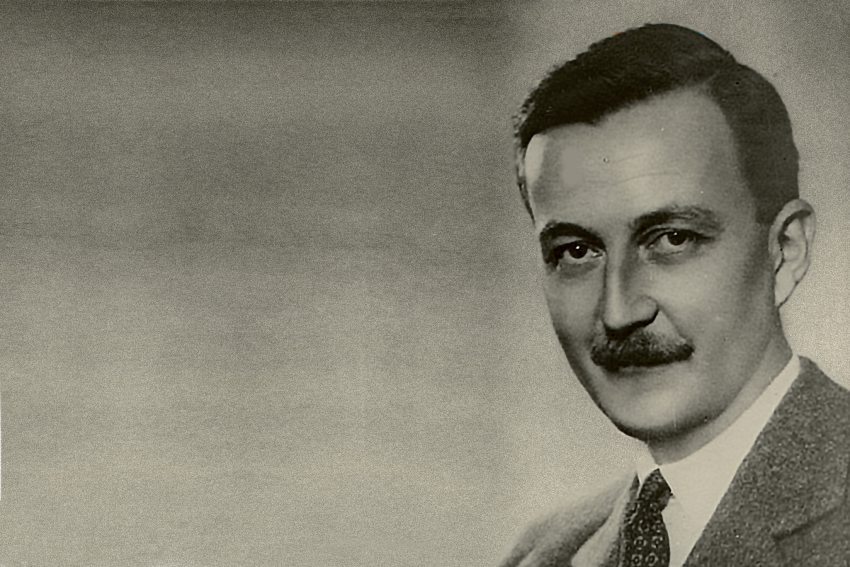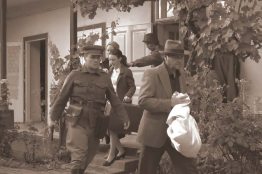„Our sign is the cross not the swastica” – A Hungarian count in Czechoslovakia
The communist dictatorship has taken its victims during the decades of its rule, both within and beyond our borders, among Hungarians forced into minority, too. This was also the case in Felvidék (the Northern part of Hungary, later part of Czechoslovakia), where those who set an example of humanity, especially if they were Hungarians, could not expect mercy. The fate of Count János Esterházy is the most eloquent example of this.

Count János was born in 1901 in Nyitraújlak, in the Zobor region, to the Esterházy family of Galánta, who wrote their name in bold letters in our history. He lost his father at an early age, so he and his two siblings were brought up by their mother, who came from a Polish aristocratic family. The family lost 90 percent of their 5,000-acre estate in post-Trianon Czechoslovakia (as a result of a land reform that appeared democratic but was in fact strongly anti-German and anti-Hungarian). Yet they did not resettle in Hungary but remained on the land of their ancestors. Young János, who had graduated from high school and the Commercial Academy in Budapest, returned home himself and started farming on the remaining family estate. In 1924, he married Countess Lívia Serényi, and they had a son, János, and a daughter, Alice.
Meanwhile, his interest turned to politics and public life. In his new homeland, which had been artificially cobbled together by the great powers and claimed to be a civil democracy, the guiding principle of official policy was "Czechoslovakism". In order to establish Czech hegemony, it not only restricted the rights of the German, Hungarian, Ruthenian and Polish minorities but also took action against the Slovaks, who were to be incorporated into the Czech nation. Seeing this, Esterházy committed himself to the protection of the Hungarian minority and entered public life.
In the political arena
From 1932 he was President of the National Christian Socialist Party, and from 1935 he was a Member of Parliament. In his public activities, he not only sought to represent the interests of the hundreds of thousands of Hungarians in the area (“Felvidék”), but also spoke out for the autonomy of Ruzynskó, which was mainly inhabited by Ruthenians, and generally advocated the protection of minorities against Prague's overbearing power. When Beneš became president of the republic, he tried to bribe him by offering him a ministerial seat, but Esterházy refused to give in and in 1936 he founded the opposition United Hungarian Party. As a politician, he was a strong supporter of the revision of Trianon (Versailles Peace Treaty), or at least of self-determination for the local Hungarian community. It naturally followed that when the first Vienna decision reannexed the Hungarian-inhabited southern part of Felvidék to Hungary, he personally greeted Governor Horthy in Kassa. However, he himself, together with 60-70,000 other Hungarians living on the northern side of the new border, remained in Czechoslovakia and, after the break-up of Czechoslovakia, in independent Slovakia, and even became the only Hungarian member of the Slovak parliament. In 1939 he publicly welcomed the establishment of an independent Slovak state and negotiated with Prime Minister Jozef Tiso on behalf of the Hungarian minority.
He was not a blind nationalist: not only did he speak up for Hungarians on the Slovak side, but also negotiated for Slovaks in the reannexed territories with the Hungarian government.
He founded a newspaper called Új Hírek, and after its suppression, he founded a new one called Magyar Hírlap and founded the Madách Book Publishing House in Bratislava for the preservation of Hungarian culture. In the increasingly fascist Slovakia, as a believer in the Hungarian Christian-national ideal, he still hoped for the complete reannexation of the Felvidék, but he finally accepted the Slovak state as a reality, of which he was no enemy.
He was not, however, at peace with the German orientation of the country, about which, as a committed Catholic, he remarked that "our sign is the cross, not the swastika".
Sharing the traditional moderate anti-Semitist views of the Hungarian and Slovak elites of the time, he was still in favour of restricting the rights of the Jews, but when the Bratislava parliament decided in 1942 to deport Jews, based on race, he was the only one to vote against the proposal. His position became even more radicalized by 1944. He took an active part in actions to rescue Jews, but also helped his fellow Ruthenians threatened by Slovak nationalists, and helped many Polish soldiers and civilians to reach the safe West through Slovakia and Hungary.
In a memorandum, he protested against the German occupation of Hungary, and at home he criticized Tiso's unconditional German friendliness, risking imprisonment. When he was in Pest, he even had to endure being taken into custody by the Arrow Cross Party for a short period of time and was put on the Gestapo's wanted list.
Power shows no mercy
After the Soviet troops reached Bratislava, he tried to negotiate with the representative of the new Czechoslovak power, the communist Gustav Husak, again in the interests of the Hungarians, but Husak arrested him and handed him over to the Soviet military authorities. He was imprisoned in the KGB's notorious Lubyanka prison in Moscow, then sentenced to ten years on trumped-up charges in a sham trial and sent to the gulag in Siberia. His health was failing, but he did not break down, and with unflagging strength, he tried to keep the spirit alive in his fellow prisoners. Meanwhile, in his absence, he was sentenced to death in September 1947 by a Czechoslovak court as a war criminal, on charges of treason, subversion of Czechoslovakia, and collaboration with fascism. Two years later, the Soviet authorities extradited him to Czechoslovakia, where his death sentence was commuted to life imprisonment by presidential pardon. In Bratislava, he could have had the opportunity to escape and leave for the West, but he remained convinced of his innocence and his veraciousness.
In the years that followed, while his sentence was reduced to twenty-five years by the 1955 amnesty, he has been in almost all the prisons and especially the prison hospitals of the country, because his health was fading rapidly. He ended up in the prison in Mirov, where he died on 8 March 1957. His body was not released to his family but was buried in a mass grave in Prague, where his remains were only identified in 2011.
After the change of regime, the Hungarian community of Felvidék initiated his rehabilitation from false accusations of war crimes, as a tribute to his standing.
he was acquitted by the Russian court in connection with his conviction there, but has still not been rehabilitated in the Czech Republic and Slovakia.
In the meantime, in the Felvidék area, Hungary and Poland, his figure has become a symbol of standing up for Hungarians and Christianity. In Mírov, he was given a symbolic tomb, and in time, public statues and memorial plaques were erected, and streets and squares were named after him. He was solemnly commemorated by the Hungarian Parliament in 2001, and his remains were laid to rest in 2017 at the foot of Zobor, in Alsóbodok. His lifesaving work was particularly appreciated by the Polish state and church: in 2009 he was awarded a high state medal and, with the support of the Hungarian, Slovak, and Polish Catholic communities, the Archdiocese of Krakow officially initiated the beatification procedure, which received a positive response from Rome in 2020. It is hoped that in time Count János Esterházy, a martyr of faith and reconciliation between nations, a victim of the communist regime, will be elevated to the ranks of the blessed and perhaps one day to sainthood.







